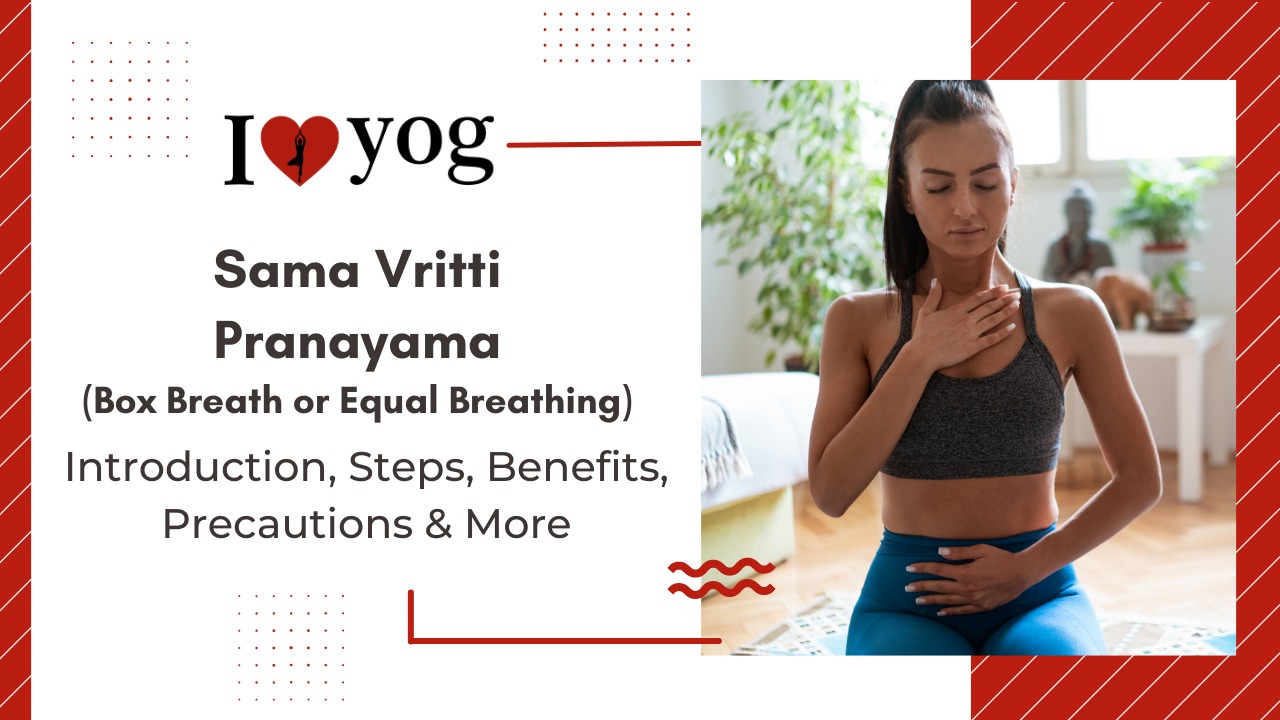Introduction of quality Sama Vritti Pranayama
Yogic Breathing, Sama Vritti Pranayama is one such technique that allows us to consciously incorporate prolonged breath holding into our natural breathing process. Incorporating conscious breath holding into the natural breathing process increases lung capacity and lifespan. So let’s explore more about Sama Vritti Pranayama, a breathing method.
Steps of Sama Vritti Pranayama
- Close your eyes.
- Inhale slowly through your nose while counting to four.
- Feel the air fill your lungs.
- Now hold your breath until you slowly count back to 4.
- Try not to pinch your airway.
- Simply hold your breath for four counts without either an inhalation or an exhalation.
- Exhale slowly to 4.
- Hold the exhalation for another 4 counts.
- Repeat step 14 for 4 minutes or until you feel calm and centered.
Benefits of Sama Vritti Pranayama
- Refinement of the breath and awareness of the flow of prana.
- Calming the Body
- Focusing the mind helps eliminate distractions, making it easier to focus and meditate.
Precautions to be taken
- Never strain the breath in pranayama.
- If you are pregnant, practice balancing inhalation and exhalation without retention have low blood pressure, it is recommended not to hold your breath after exhalation
Reference
- https://www.ekhartyoga.com/articles/practice/how-to-practice-samavritti-breath
- https://www.yogajournal.com/practice/yoga-sequences/sama-vritti-pranayama/
Frequently Asked Questions (FAQs)
What are the goals of this pranayama?
Calming, concentration and relaxation of the body
What is the purpose of this pranayama?
The purpose of this pranayama exercise is to balance the four components of the breath:
- Inhalation (Puraka)
- Internal Retention (Antara-Kumbhaka)
- Exhalation (Rechaka)
- External Retention (Bahya-Khumbaka)
Can pregnant women do this pranayama?
Yes, you can perform it, but you should hold your breath until you can even your breath.
How long can you hold your breath?
You can hold your breath and count to 6 if you’re still having trouble getting them to count to 4, 2, or then 1.
What are the practical tips?
Use Ujjayi breathing in your routine for a more complex variation. This adds a warming effect and helps block out external noise. To make this breathing exercise more intense and challenging, you can increase the count up to 6 count to 2 or 3 until it feels easier. You can also remove the breath hold and simply do the breathing cycle with just inhaling and exhaling. A daily pranayama practice is recommended to learn this technique quickly and to take advantage of its many benefits will affect the quality and usefulness of the pranayama practice. If you can’t maintain an equal ration, it’s best to stop, rest for a few breaths, and then try again.
When to do Sama Vritti Pranayama?
Sama Vritti Pranayama can be practiced any time of the day, but the best time to practice is when you need to cultivate inner peace, balance and grounding. Ideally, find a quiet place away from distractions so you can fully focus and tune in to your breath. It is recommended to be practiced before other practices as it helps to prepare the body and mind for yoga asana practice, meditation and other types of pranayama. This method may be used to improve your focus while performing yoga positions.
What are the precautions and contraindications?
Although Sama Vritti Pranayama is safe, there are a few precautions to keep in mind. Do not hold your breath if you are pregnant or have high blood pressure, lung, heart, eye, or ear issues. Instead, just work on balancing the length of the inhale and exhale. If you feel dizzy, light-headed, or uncomfortable, stop and return to a normal, relaxed breathing pattern.


